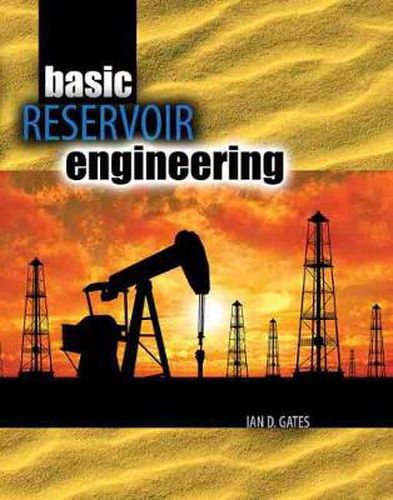Readings Newsletter
Become a Readings Member to make your shopping experience even easier.
Sign in or sign up for free!
You’re not far away from qualifying for FREE standard shipping within Australia
You’ve qualified for FREE standard shipping within Australia
The cart is loading…






This title is printed to order. This book may have been self-published. If so, we cannot guarantee the quality of the content. In the main most books will have gone through the editing process however some may not. We therefore suggest that you be aware of this before ordering this book. If in doubt check either the author or publisher’s details as we are unable to accept any returns unless they are faulty. Please contact us if you have any questions.
Basic Reservoir Engineering, written for use in a first introductory one-semester course in reservoir engineering, introduces the underlying goals of reservoir engineering and presents a clear roadmap for analyzing reservoirs themselves.
Basic Reservoir Engineering:
Includes chapter review questions to help students understand, practice, and retain the information presented. Includes a glossary that enlightens the student to much of the jargon found in the oil and gas industry.
Chapter 1 introduces the reader to the field of reservoir engineering.
Chapter 2 presents basic reservoir concepts dealing with flow through porous media including porosity, permeability, saturation, relative permeability, capillary pressure, hysteresis, and resistivity theory.
Chapter 3 deals with basic pressure-volume-temperature behaviour concepts for petroleum fluids.
Chapter 4 introduces mapping and volumetric calculations.
Chapter 5 describes decline analysis and the construction of type curves.
Chapters 6 outlines the material balance method for oil
Chapter 7 outlines the material balance method for gas systems.
Chapter 8 describes water aquifer models.
Chapter 9 describes some basic models for describing oil production including displacement theory.
Chapter 10 describes buildup and drawdown theory.
Chapter 11 introduces analysis of thermal processes including cyclic steam stimulation and steam-assisted gravity drainage.
Chapter 12 describes basic data requirements and theory of reservoir simulation.
$9.00 standard shipping within Australia
FREE standard shipping within Australia for orders over $100.00
Express & International shipping calculated at checkout
This title is printed to order. This book may have been self-published. If so, we cannot guarantee the quality of the content. In the main most books will have gone through the editing process however some may not. We therefore suggest that you be aware of this before ordering this book. If in doubt check either the author or publisher’s details as we are unable to accept any returns unless they are faulty. Please contact us if you have any questions.
Basic Reservoir Engineering, written for use in a first introductory one-semester course in reservoir engineering, introduces the underlying goals of reservoir engineering and presents a clear roadmap for analyzing reservoirs themselves.
Basic Reservoir Engineering:
Includes chapter review questions to help students understand, practice, and retain the information presented. Includes a glossary that enlightens the student to much of the jargon found in the oil and gas industry.
Chapter 1 introduces the reader to the field of reservoir engineering.
Chapter 2 presents basic reservoir concepts dealing with flow through porous media including porosity, permeability, saturation, relative permeability, capillary pressure, hysteresis, and resistivity theory.
Chapter 3 deals with basic pressure-volume-temperature behaviour concepts for petroleum fluids.
Chapter 4 introduces mapping and volumetric calculations.
Chapter 5 describes decline analysis and the construction of type curves.
Chapters 6 outlines the material balance method for oil
Chapter 7 outlines the material balance method for gas systems.
Chapter 8 describes water aquifer models.
Chapter 9 describes some basic models for describing oil production including displacement theory.
Chapter 10 describes buildup and drawdown theory.
Chapter 11 introduces analysis of thermal processes including cyclic steam stimulation and steam-assisted gravity drainage.
Chapter 12 describes basic data requirements and theory of reservoir simulation.